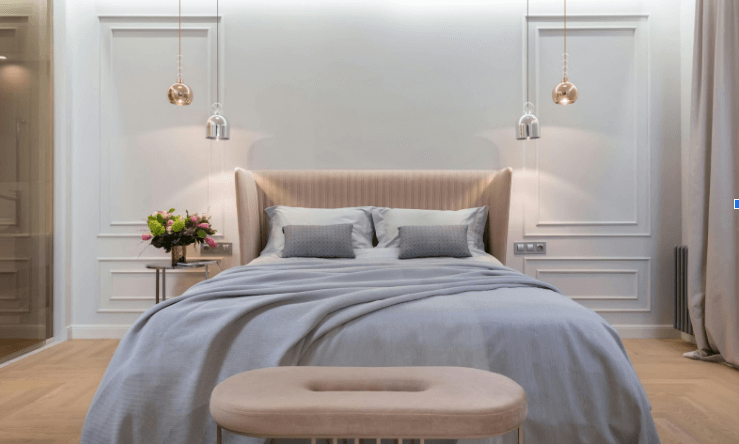Making the Best Lighting Design Choices for Your Interiors

Lighting plays a crucial role in transforming any space. It can set the mood, enhance functionality, and even elevate the aesthetics of your interiors. Yet, while its impact is profound, lighting design is often overlooked in favor of furniture or color schemes. This guide walks you through essential lighting tips to ensure your spaces are functional, inviting, and beautifully illuminated.
Understanding Light Sources: Natural vs. Artificial Light
Natural Light
Natural light, streaming in through windows and skylights, is a gift for any home. It makes colors appear more true-to-life, creates a welcoming atmosphere, and even boosts well-being. The trick is to maximize its use. Light-filtering curtains, mirrors, and strategically placed furniture can help amplify natural light.
Artificial Light
While natural light is ideal during the day, artificial light bridges the gap when the sun goes down. Artificial lighting ensures consistent illumination throughout your home, regardless of weather or time. Balancing the two light sources within each room is the key to a well-lit, functional interior.
Types of Lighting
Lighting design isn’t just about brightness. Different types of lighting combine to achieve a layered, dynamic look.
1. Ambient Lighting
Think of ambient lighting as the base layer. It provides overall illumination, ensuring the room is well-lit and functional. Ceiling-mounted lights, recessed lights, and chandeliers often serve this purpose.
2. Task Lighting
Focused and practical, task lighting is essential for specific activities like reading, cooking, or working. Desk lamps, under-cabinet kitchen lighting, or adjustable floor lamps are common examples. Remember, this type of lighting should minimize glare and shadows for improved functionality.
3. Accent Lighting
Accent lighting is all about aesthetics. It highlights particular areas or objects like artwork, textured walls, or architectural details. Spotlights, track lighting, and wall-mounted fixtures work wonders to add depth and drama to your space.
By carefully mixing these three types, you can achieve a cohesive lighting design that enhances both practicality and visual appeal.
See also: How Seasonal Changes Affect Your Roof and What Homeowners Can Do
Choosing the Right Fixtures for Each Room
The right fixtures not only influence the light quality but also tie together your interior design. Here’s a quick look at selecting fixtures for specific areas in your home.
Living Room
The living room often serves as a hub for relaxation and entertainment. Combine ambient lighting with a chandelier or pendant light in the center. Layering in a floor lamp and some stylish table lamps adds warmth and versatility. Dimmer switches here are a great addition for controlling the ambiance during movie nights or gatherings.
Kitchen
The kitchen calls for functional and bright lighting. Recessed lights provide even illumination, while task lighting under cabinets ensures clear visibility for prep work. A statement pendant light above the kitchen island adds a stylish touch.
Bedroom
Bedrooms require a cozy and restful atmosphere. Soft ambient light from ceiling fixtures is a must. Pair it with task lighting by the bedside for reading. Wall sconces or pendant lights on either side of the bed save surface space and add a chic flair.
Bathroom
Bathroom lighting combines functionality with style. Bright light near the vanity mirror ensures clarity for grooming, while softer ambient lighting creates a relaxing vibe for a soak in the tub. Fixtures with moisture-resistant features are important for safety and durability.
Dining Area
The dining room benefits from focused lighting. A statement pendant or chandelier above the dining table creates a focal point. Pair this with dimmer switches for easy transitions from casual meals to special occasions.
Common Mistakes to Avoid in Lighting Design
Even the best lighting plans can falter due to a few common mistakes. Avoid these pitfalls to create a flawless lighting design:
- Relying on a Single Light Source
One overhead light is rarely enough. Combine different types of lighting for a layered, balanced look.
- Ignoring Proportions
Oversized or undersized fixtures throw off the balance of the room. Ensure the size of your lighting fixture complements the room’s dimensions and furniture scale.
- Overlooking Task Lighting
Neglecting task lighting can reduce functionality in crucial areas. Always account for activities specific to each space.
- Forgetting Dimmers
Dimmers provide flexibility in controlling the mood and intensity of light. They are an affordable yet impactful upgrade for any room.
- Mismatched Bulb Temperatures
Warm light works well in relaxing spaces like bedrooms, while cool light is better for task-oriented areas like kitchens. Mixing temperatures can create an inconsistent and jarring atmosphere.
Bring Your Interiors to Life with Thoughtful Lighting
Great lighting design is about more than just fixtures and bulbs. It’s about creating an experience in your space that supports functionality, sets the mood, and makes your interiors shine. By blending natural and artificial light, incorporating ambient, task, and accent light, and selecting purposeful fixtures for each room, you can design spaces that are as practical as they are visually stunning.
Start layering the light in your interiors today and watch your home transform into a cohesive and inviting haven!




